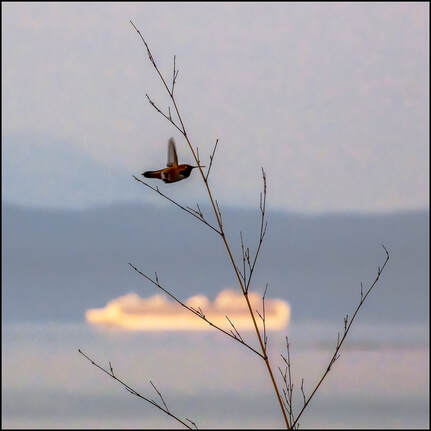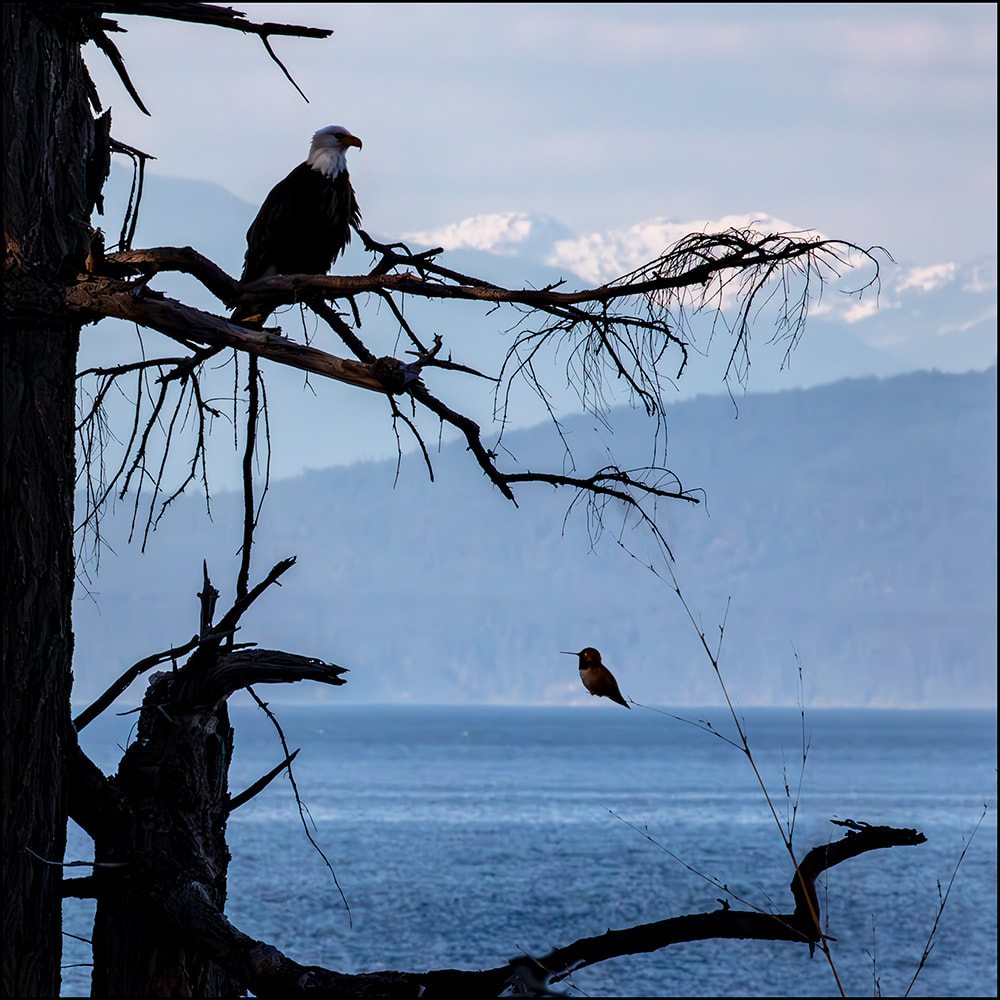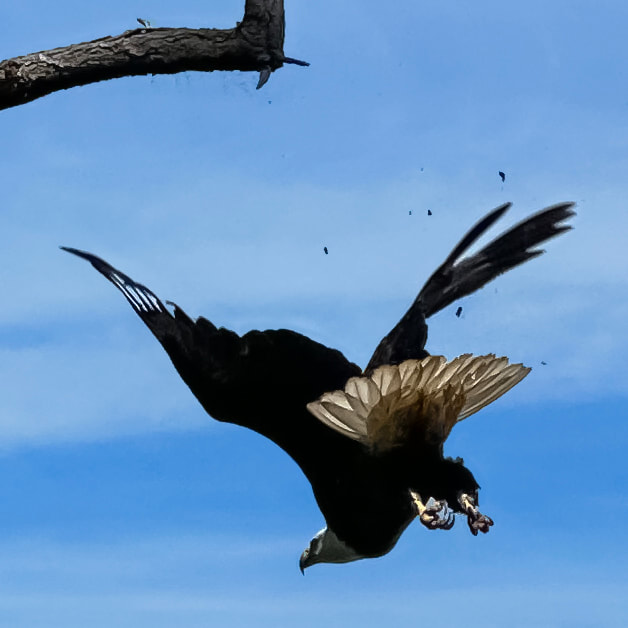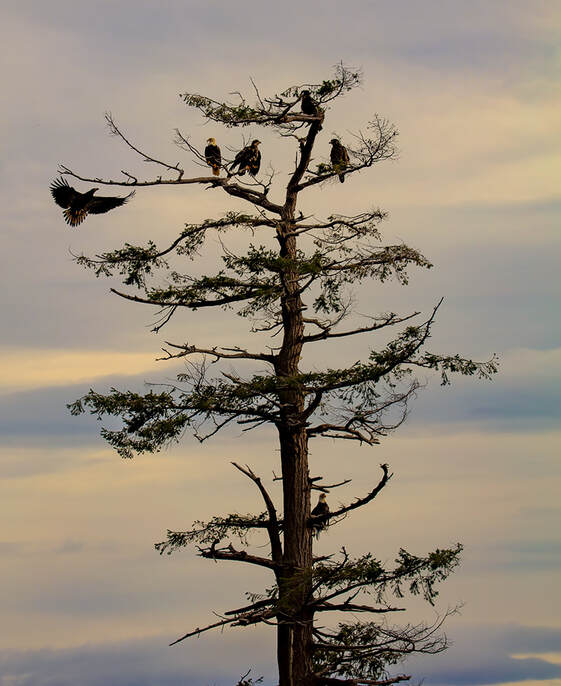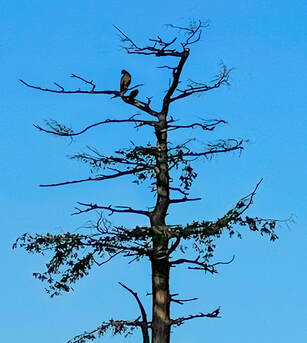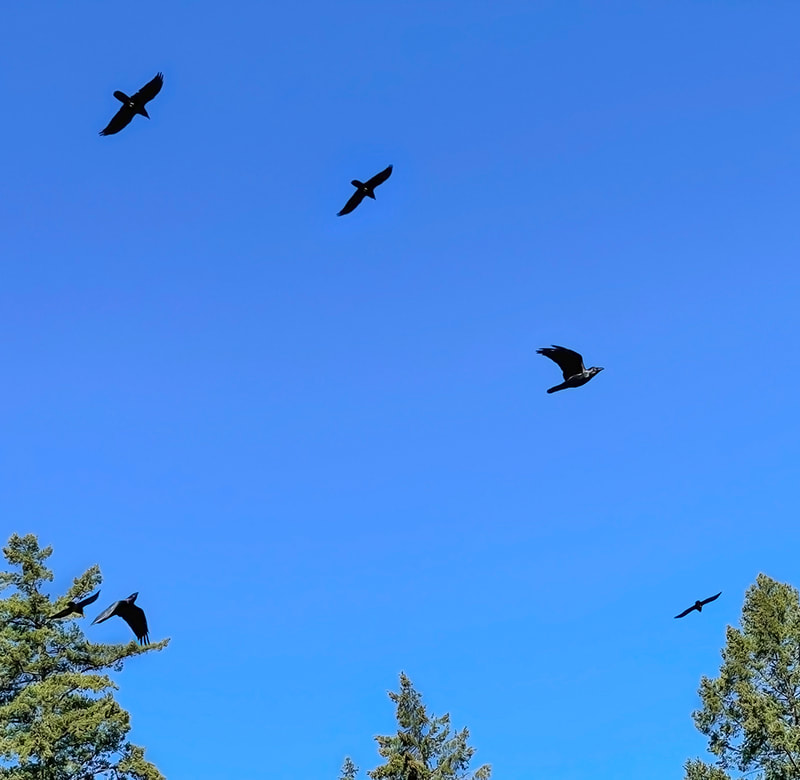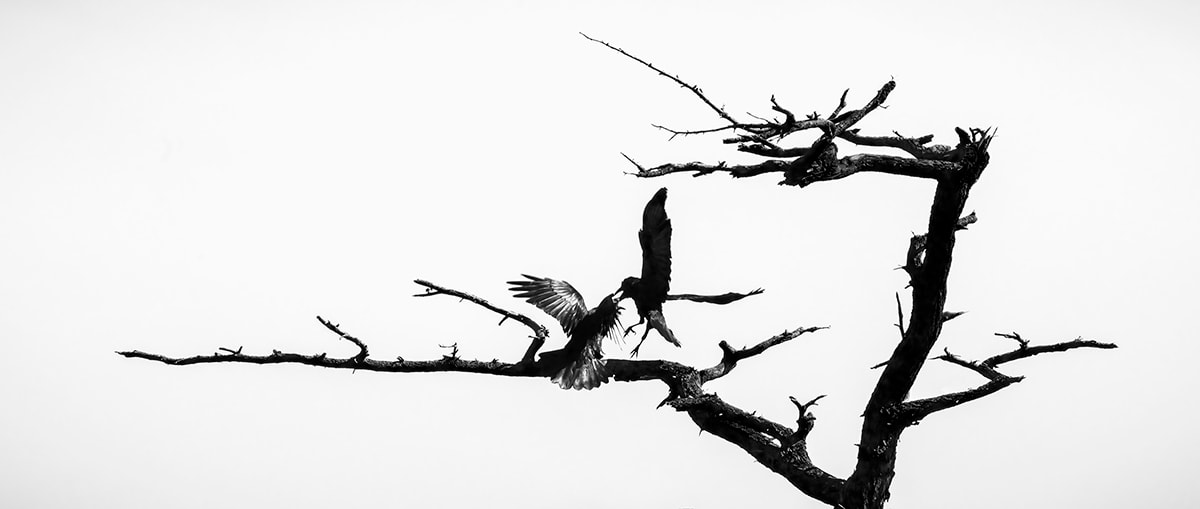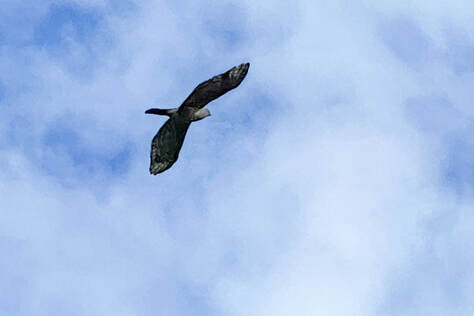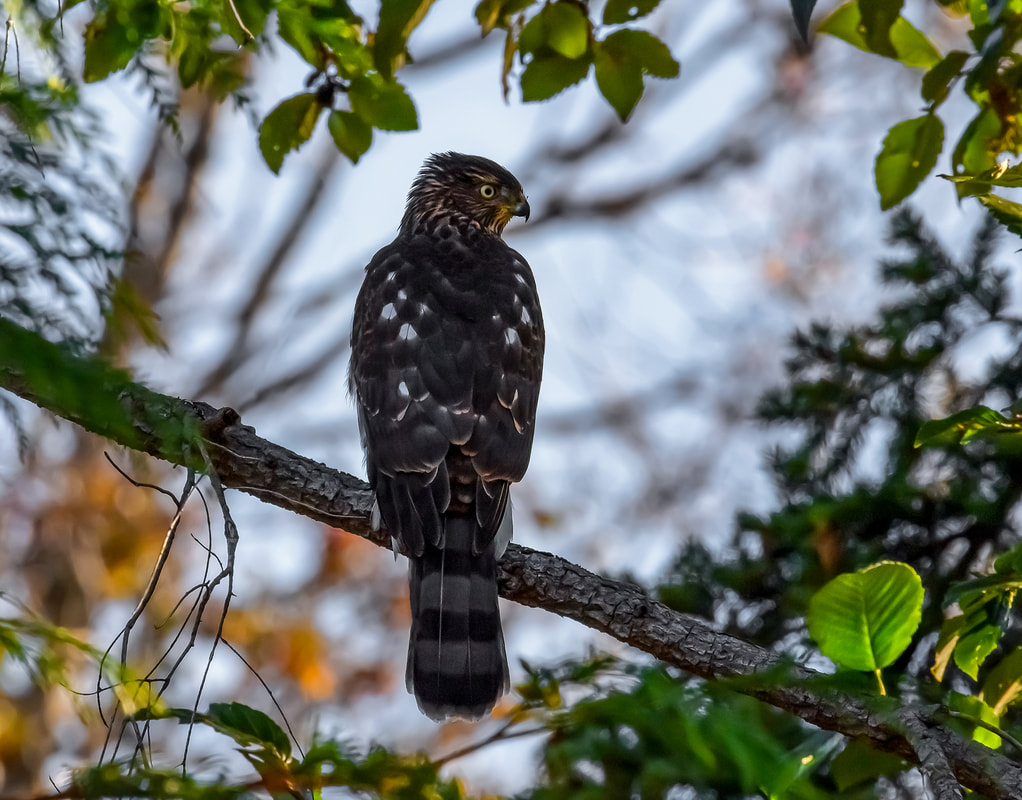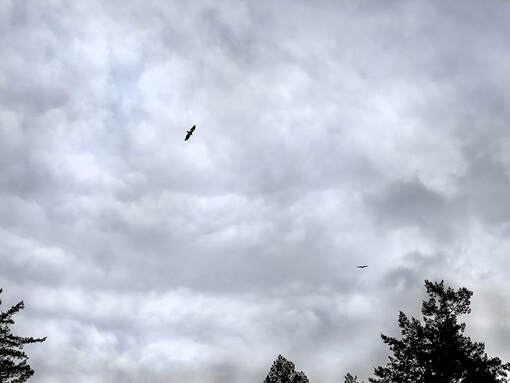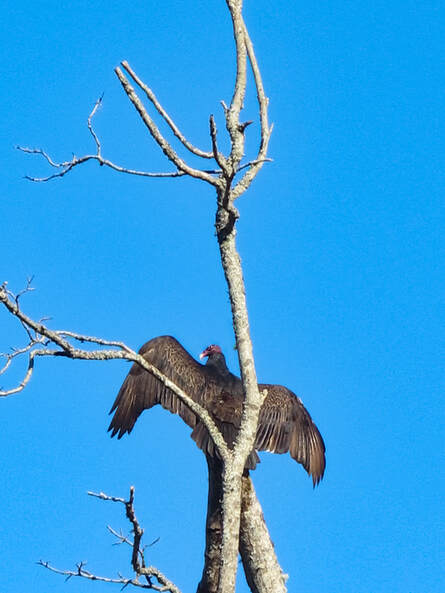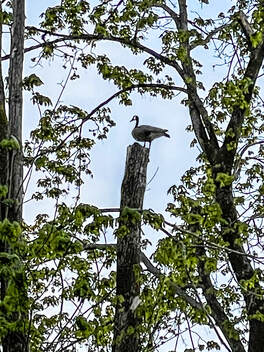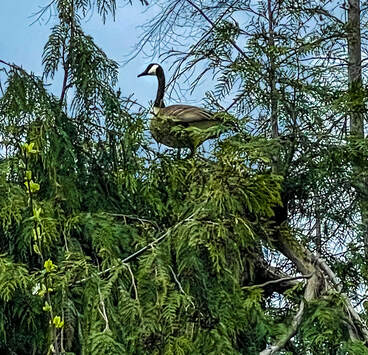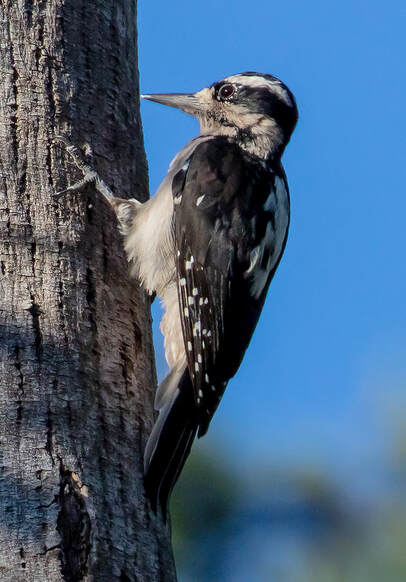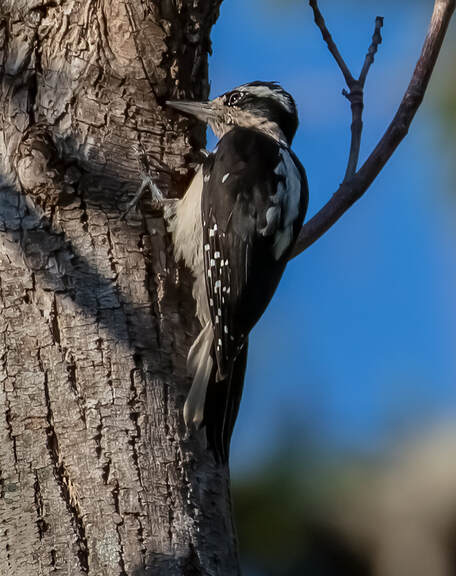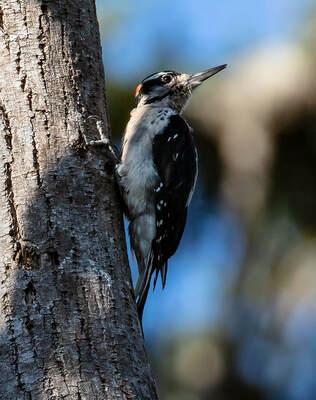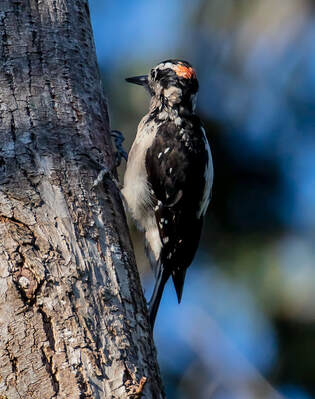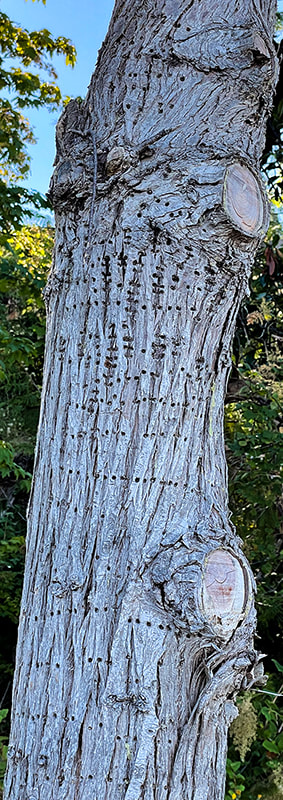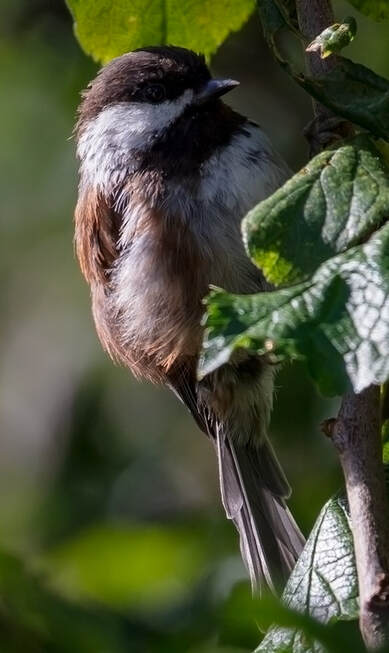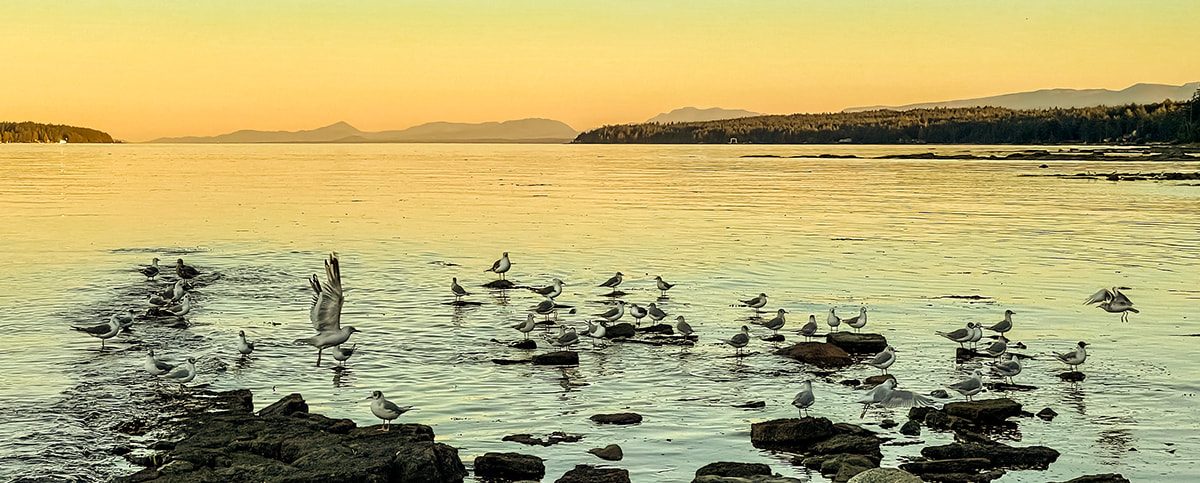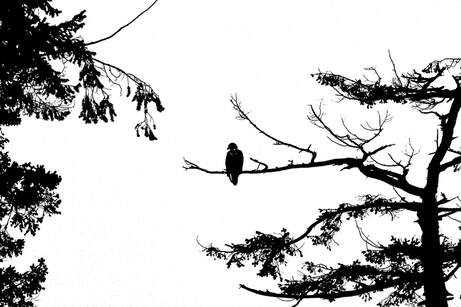"You’ll enjoy the smell and use of your own private Japanese Cedar hot tub and the sounds of frogs and birds at night, sitting on your balcony looking into the beautiful gardens. Additionally, the access to the beach was lovely and we would often walk down for a morning walk and would see otters, eagles, and lots of other wildlife." Callista R, Apr ‘22
|
58 Species and counting...
|
The photographs on this page represent a fraction of the birds species that we see without having to move off the deck; talk about the armchair naturalist! I don't consider myself a wildlife photographer, but I just can't seem to stop pointing my lens at them.
The Full Roster ~ Every Bird I can remember seeing and could identify with some degree of certainty, (therefore not including most gulls, ducks and other seabirds, who are out there but are too far away to identify.)
American Goldfinch | American Kestrel | American Robin | Anna's Hummingbird | Bald Eagle | Band-tailed Pigeon | Barred Owl | Belted Kingfisher | Black-headed Grosbeak | Brewer's Blackbird | Brown Creeper | Brown-headed Cowbird | Bushtit | Canada Goose | Cedar Waxwing | Chestnut-backed Chickadee | Chipping Sparrow | Common Rosefinch | Cooper's Hawk | Cormorant | Dark-eyed Junco | Downy Woodpecker | European Starling | Golden-crowned Kinglet | Golden-crowned Sparrow | Great Blue Heron | Gull | Hammond's Flycatcher | Hairy Woodpecker | House Finch | House Sparrow | Lincoln's Sparrow | Northern Flicker | Northwestern Crow | Peregrin Falcon | Pileated Woodpecker | Pine Siskin | Purple Finch | Raven | Red-Breasted Nuthatch | Red-breasted Sapsucker | Red-tailed Hawk | Red-winged Blackbird | Roufous Hummingbird | Ruby-crowned Kinglet | Snow Goose | Song Sparrow | Spotted Towhee | Swainson's Thrush | Three-toed Woodpecker | Tree Swallow | Trumpeter Swan | Turkey Vulture | Varied Thrush | Western Tanager | White-crowned Sparrow | Winter Wren | Yellow Warbler | Yellow-rumped Warbler
Rufous Hummingbird
|
|
The Rufous is known as the most territorial and aggressive of all the hummingbirds, and this guy defends his/our front yard and his feeder in the garden of the "Sunrise" unit, against all-comers. Except for the guests, who he tolerates and keeps company, visiting the feeder every minute or two in the evening as he stocks up for the night.
Both males and females are territorial; however, they defend different types of territories. The more aggressive males fight to defend areas with dense flowers, pushing females into areas with more sparsely populated flowers. Males generally have shorter wings than females... This allows males to beat their wings at high frequencies, giving them the ability to chase and attack other birds to defend their territory. The metabolic cost of short wings is compensated for by the fact that these males do not need to waste energy foraging for food, because their defended territory provides plenty of sustenance. (Wikipedia) |
more Bald Eagles
|
You might just pull up at the bottom of the drive and see an eagle sitting on a branch in front of you across the road; and if you are like me you'll pull out the cell phone, snap a quick pic., and be on your way. After all, one can't spend all day watching eagles...
During March the "Herring Run" attracts more wildlife in general, and eagles in particular, to our shore. Whist there may be many more in the trees lining our bank, they are difficult to see because of the dense foliage. When they rest in the snag, it gives us the opportunity to see them clearly. Here, they look bedraggled; they are wet and drying off after fishing.
|
|
I challenge you to click on this to enlarge it, and count the number of eagles in this feeding frenzy taking place off the North shore of Hornby Island; photographed from the deck. There must have been a sizeable shoal of herring near the surface, and the red pleasure boat just drifted picturesquely on the edge of it all.
Taken on March 11th. (2018) at the time of the annual "Herring Run", the largest wildlife event of the year... |
Ravens
|
If any bird is part of the scenery, it's the ravens. This family group are around most of the time, but at a distance. They rarely land in the garden unless it's to raid the fruit trees; apparently too busy flying back and forth, playing, and bothering each other in the tree tops.
|
Even more present in the background is their calling and talking to each other, and the whooshing of their wings pushing through the air, that accompanies the wind through the trees and the ocean waves to form our soundscape.
"Each morning, we woke to the songs of the thrushes and robins and the raucous music of the ravens. It’s hard to forget the sound of their wings whipping the air—a sound that became familiar biophony after six days. That and the buzz of the hummingbirds." Tom & Gillian, July ‘21
Cooper's Hawk
Denman's most common hawk, a small accipiter that specializes in catching small birds on the wing; a few times I've seen a one tearing its unfortunate victim limb from limb on a nearby tree stump. More often I've seen them flying straight across the garden extremely fast, and I've witnessed a couple of high-speed hunts, the would-be meal weaving left and right, with the hawk locked on and gaining.
|
In late August '22, I had some consecutive and unusual sightings. The first was from a large downstairs window - suddenly a raven flashed infront no more than 6 feet away, with a cooper's hawk literally 'on it's tail'; adjacent to the window the raven did a sharp left and flew directly away from me, the hawk turned with it and I clearly saw those barred tail feathers fan out in the maneuver, before the it veered off a second later leaving the raven to continue unmolested. It was all over in an unforgetable 3-4 seconds.
The next day I was eating supper on the deck with only my iPhone to hand, when a the hawk landed on the gate at the bottom of the garden. He sat there for a minute or 2 but I dared not move, except to take some really lousy shots on the phone.
|
Finally I was rewarded, when another day or 2 after that I was on the back deck when a it (probably the same one) flew past me within a few feet and came to rest on a branch on the other side of the garden. It graciously stayed there long enough for me to fetch the camera, then posed for some lovely portraits before flying away.
Turkey Vultures
|
Virtually always seen on the wing, silently circling above us; wherever they choose to roost overnight, it's usually in the treetops out of sight. Needing to warm up on a bright Summer morning, we caught this one sunning itself in our neighbour's dead maple next to what is now the guests' back garden.
|
Canada Geese
↕
|
Large flocks of Canada geese live on our side of the island, flying back and forth between the pastures intended for grazing livestock on the farms a few blocks either side of us and the ocean. They perform this ritual several times a day (and at night), and they are usually very vocal! Occasionally one has landed on a topped tree to use it as a "honking post".
|
Hairy Woodpeckers
|
These are the most common of the 5 species of woodpecker and their cousins the sapsuckers that we see in the garden, the others being Pileated Woodpeckers, Norther Flickers (sapsuckers), Red-breasted Sapsuckers, Downy Woodpeckers, and just once I sighted a pair of rare Three-toed Woodpeckers, with their distinctive yellow crown and barred back, which makes it 6 species!) However, more often than seeing woodpeckers, we hear them drumming on a hollow trunk, sometimes answered by another, more distant...
|
|
Look closely at the bark on the dying maple that the hairy woodpeckers are feeding on, and you'll see that it's covered in hundreds of tiny holes, mostly in verticle groups of three, for some strange reason.
Woodpecker Hunting Marks are made when exploring; they have a keen sense of hearing that aids them in hunting for prey underneath the wood. The woodpecker will tap the wood to listen for any hollowness or irregularities that may indicate a beetle or ant gallery. By tapping at the tree, any bugs within will get disturbed, causing those bugs to move and the noises created allow the woodpecker to zero-in and grab its next meal. (Extracts from: https://natureidentification.com/woodpecker-holes-and-other-sign-on-trees/ ) |
Sap Wells can be considered a type of passive trap as the sapsucker revisits these wells to feed on both sap and bugs attracted to the sap. The damage caused from sap wells can be extensive and can expose the tree to fungal and other microbial infections.( https://natureidentification.com/woodpecker-holes-and-other-sign-on-trees/ )
Chestnut-backed Chickadee
|
As ubiquitous as the ravens, chickadees are around every day; unlike the ravens, these bold little titmice will land on a plant within reaching distance of you to hunt for insects, urgently cheeping away, as if it had some important information to impart!
Known for their acrobatics, they can hang upside-down under the eaves looking for a meal, and they often forage on our cedar shake roof; so if there is a bird trapped in the roof space you can bet it'll be a chickadee.
|
Gulls
Having grown up in a seaside town, seagulls are so familiar to me that they really are part of the scenery, not usually given a second glance. Then, trying to identify the species isn't easy... They start life with 4 years' development to becoming adults, with the accommpanying plumage changes, plus the seasonal plumage cycle on top, these variations adding to the confusion that different species flocking together, as they are prone to do, already generates! Enlarge the image below and you'll see what I mean. Plus, there's a big variation in sizes; e.g. the gull, centre, back row, is much larger than the one in front and to the left of it; different species or juvenile/adult? So, for now at least, they will have to remain just "gulls" to me, and I can live with that.
Red-tailed Hawk
|
I've only seen a red-tailed hawk a handful of times, and this one sat on that branch for a long time. Although I was able to identify it with binoculars, the light and the technology wasn't good enough at the time to capture any shadow detail. However, it did have an elegant silhouette.
Besides the Eagles, Vultures and these guys, the other raptors we see are the occasional Coopers Hawk chasing down some hapless small bird or perched on a stump consuming same; the very occasional American Kestral, last year, a big Barred Owl sitting on a fence post let me approach quite close before taking flight; no phone/camera on me at the time, darn it! But most exciting for me, this year an adolescent Peregrin Falcon has been visiting the snag, I'll post photos asap. |
Robin Fledgling vs. Sour Cherry

